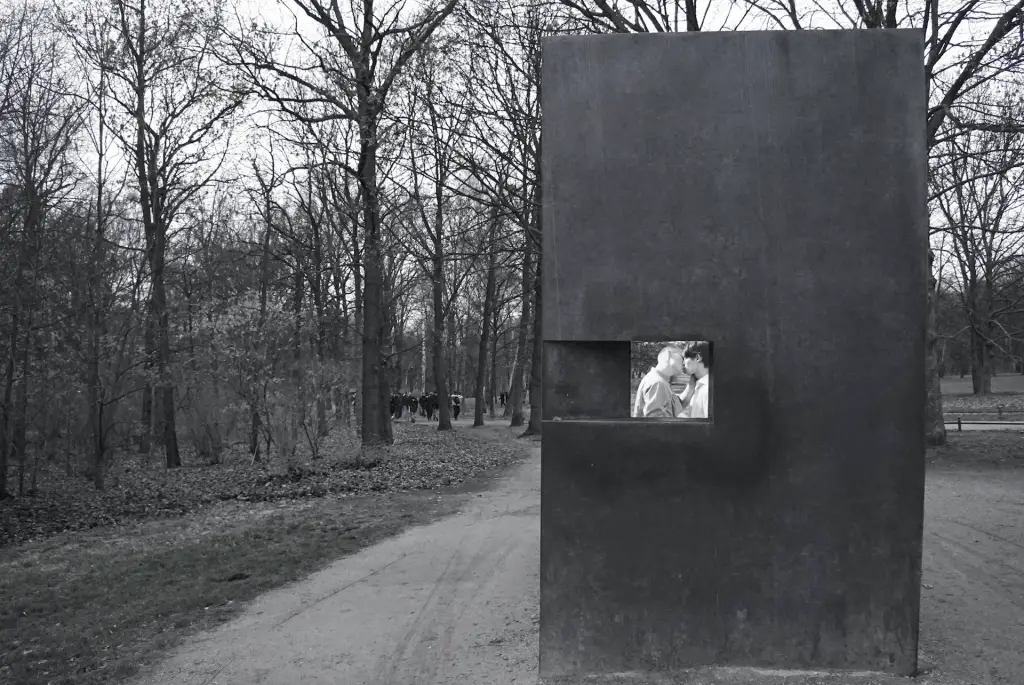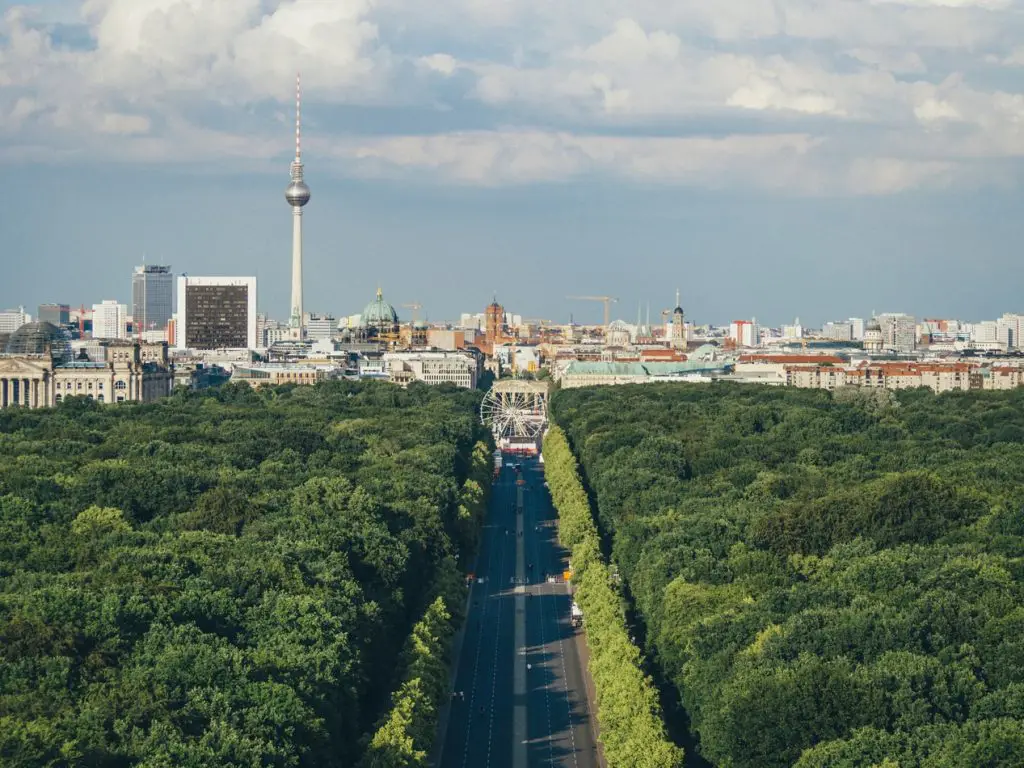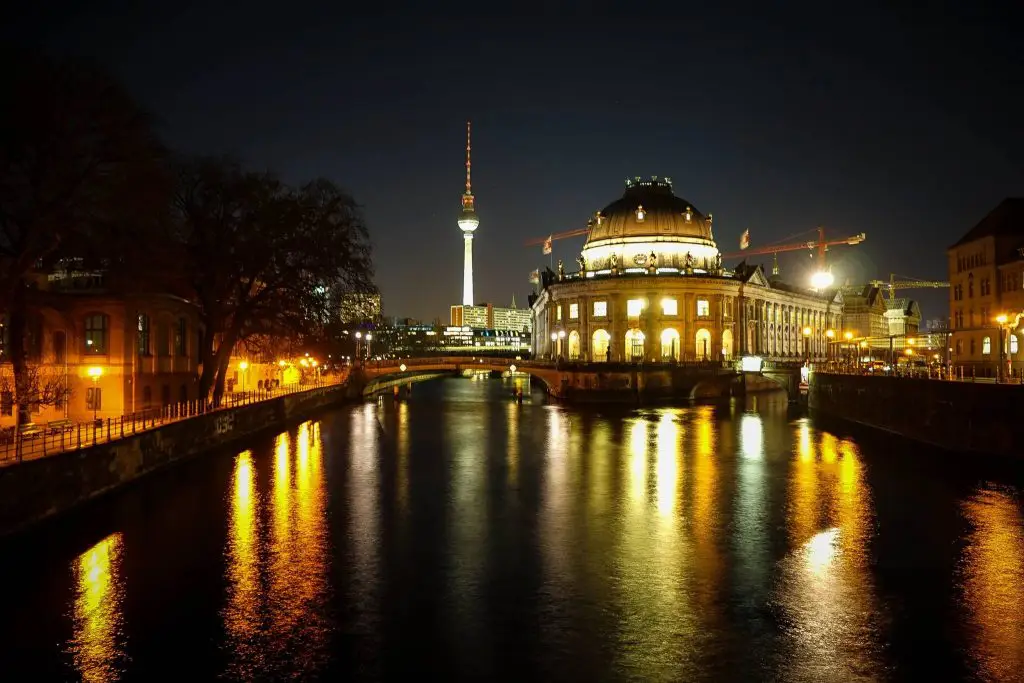Expert travel storyteller Jordan Adkins, founder of InspiredByMaps.com, brings a decade of adventures across 101 countries and 450+ UNESCO sites into rich, off-the-beaten-path narratives, melding ecological expertise with genuine, seasoned travel insights. His full bio can be found here.
“Those who cannot learn from history are doomed to repeat it” – On a recent trip to Berlin, I was incredibly moved by all the history and had been doing a lot of deep reflection within myself and the world we live in.
Specifically, the Memorial to Homosexuals Persecuted Under Nazism located in Berlin’s Tiergarten really made me get thinking and had quite an emotional impact on me. There is only one photo here and is not so much about travel, but part of the more significant travel experience that I felt the need to reflect on and share with the world.
On the front side of the cuboid memorial is a window, through which visitors can see a short film of two kissing men.
I found the Berlin homosexual memorial very moving on a personal level, and it leads me to reflect further on not only the persecution under Nazism, but the abuse which continued under Allied forces after liberation and until the 1990’s which I had never known.
I also considered that this persecution continues today in many countries, and is getting worse in some places not better (just look at the Russian LGBT propaganda law)
The Berlin homosexual memorial is dedicated to the persecutions of homosexuals during Nazism. Between 1933 and 1945, under Nazi rule, it is estimated that around 100,000 individuals were arrested for the crime of homosexuality, but this did not, in fact, end after the war as it did for the majority of other concentration camp victims.
Between 1945 and 1969, in West Germany alone, 100,000 individuals would likewise be arrested and accused of the crime of homosexuality, with 50,000 convicted and sentenced to prison.

Many homosexual survivors of the concentration camps were re-arrested and imprisoned based on charges brought initially against them by the Nazis during the war!!!! This made me absolutely sick to my stomach when I found out!!
The victim’s time in concentration camps counted for nothing as well, so their sentences started from the date of their so-called ‘liberation,’ and the only real difference was the were no longer put to death.
Homosexuals are now considered to have suffered the highest proportional death rate within concentration camps; however, homosexuals made up a relatively small percentage of total holocaust victims. At an individual level, though, the suffering homosexuals went through is quite difficult for me to comprehend and is as profound and extreme as anyone could have suffered.
Those imprisoned in concentration camps for homosexuality were often subject to particularly brutal abuse and treatment because of how despised homosexuality and homosexuals were at that time; there are stories of men being forced to watch their lovers eaten alive by guard dogs; torture of homosexuals was rife and extreme and sadly the majority of homosexuals sent to concentration camps would not survive.
For the ones that did, it is difficult to call them lucky – many would find themselves imprisoned, yet again their Allied liberators become their latest jailers.
Outrageous charges were leveled against them by the Nazis were resurrected by the post-Nazi authorities, the end of the war offering no relief from persecution and imprisonment. Liberation from Auschwitz and Buchenwald only resulted in relocation to different prisons; post-Nazi, post-war Germany was as unwelcome, unfriendly, and dangerous a place as before for homosexuals.
The Nazi-era law “Paragraph 175”, which outlawed homosexuality, was only reformed in 1969, attenuated in 1973, and finally voided in 1994.

I write this not to place the suffering of homosexuals above any other group that suffered under Nazi fascism, and indeed there were many, but to highlight something that many people may not be aware of. Western Government’s continuation of policies of the Nazis is a dark secret.
I believe that has not been adequately addressed, and I think the Memorial to Homosexuals Persecuted Under Nazism in Berlin is a small step towards this.
While I do not understand or relate with the design of the Memorial to Homosexuals Persecuted Under Nazism, it has achieved its goal of getting the viewer to consider the past, with the installation taking on its meaning to me. If you are in Berlin, I highly recommend visiting here. The landmark memorial is the third of its kind in Germany following Frankfurter Engel (1994) in Frankfurt and the Kölner Rosa Winkel in 1995.
The world’s first public monument honoring the LGBTQ community, the Homomonument, was unveiled in 1987 in Amsterdam, and recently in 2013, Tel Aviv unveiled a memorial honoring LGBTQ victims of the Holocaust. There is also Gay and Lesbian Holocaust Memorial in Sydney, installed in 2011 in 2001 at the Jewish Museum.
For anyone else that is interested, the Deutsches Historisches Museum had a fantastic exhibition considering the past and present of LGBT history called HOMOSEXUALITY IES, but this may have since ended. A visit then to the Schwules Museum is highly recommended. It addresses the current and future of gender codes and sexualities – as is a visit to Potsdam on a Berlin day trip to see how and where the terms for the end of World War II were negotiated.
I also highly recommend a book called “The Men with the Pink Triangle: The True Life-and-Death Story of Homosexuals in the Nazi Death Camps” by Heinz Heger, one of the very few first-hand accounts of the treatment of homosexuals in Nazi imprisonment. Either way, be sure to visit the very poignant Memorial to Homosexuals Persecuted Under Nazism in Berlin’s Tiergarten!



